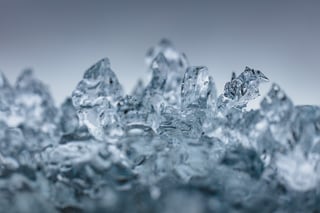 As the temperature drops -and then keeps dropping- it can cause more than just frozen pipes and dry skin. Brutally cold temperatures can have major effects on moisture as well. When specific amounts of moisture are vital to your line of work, this can quickly wreak havoc. Here’s how frigid air can affect moisture.
As the temperature drops -and then keeps dropping- it can cause more than just frozen pipes and dry skin. Brutally cold temperatures can have major effects on moisture as well. When specific amounts of moisture are vital to your line of work, this can quickly wreak havoc. Here’s how frigid air can affect moisture.
How Cold Temperatures Increase Moisture
Winter weather can prove challenging when trying to accurately predict moisture or air humidity. The temperature of the air directly affects how much water vapor the air can hold. As the temperature falls, the air is able to hold less and less moisture. In fact, as the temperature decreases by 20℉, the relative humidity doubles.
Because of this, moisture tends to settle in the form of condensation in colder weather. As a result, cold weather can change things like the drying time and the moisture content of things like wood or paper, drywall, dry food mixes, concrete, or electronics since the amount of moisture that the air can hold is so limited.
For some porous materials, including those used in construction, a change in moisture can also mean a change in shape. Condensation can result in too much moisture, and materials like wood tend to swell when they absorb more moisture than they should. In fact, wood flooring that has not properly acclimated to its climate may gap, warp, or buckle.
Also, moisture that condenses and freezes will expand as it solidifies, which can cause stress fractures and cracks, especially in concrete. Knowing the ways cold air and increased moisture factor into your products can have a huge impact on your processes as the temperature plummets.
How Cold Temperatures Can Be Drying
One of the ways we notice dry air in the winter is that our lips chap and the skin on our hands cracks. Why is this? Since the air can only hold so much water (and condenses, as we’ve discussed before), when cold air travels inside and warms up, it wants to reach an equilibrium with the relative humidity of the warmer air.
This cold air will absorb moisture in any way it can: it will pull moisture from our lips and hands, and also from paper, food products, wood, cement -basically anything around it with water or moisture. Much like too much moisture being an issue, too little moisture can cause just as many problems.
So yes—in addition to frigid temperatures increasing moisture content because of condensation, bitter winter weather can also be incredibly drying if the air at any point can hold any additional water vapor.
Cold Weather and Your Moisture Meter
Keep this in mind: Many moisture meters are calibrated to give accurate moisture content readings within a specific temperature range. If temperatures have fallen below the specified temperature range for your meter, know how to adjust your reading to accurately reflect the moisture at that temperature.
How to Combat Winter Moisture Issues
Winterizing any space is important, especially one in which accurate moisture levels are so vital to success. Energy.gov has a few general tips to prepare for winter, but one of the best ways to combat dry air is to be sure the space is properly sealed and insulated. If cold air is able to get in, it will absorb moisture wherever it can. Check that windows, doors, or seals are secure and airtight in your workspace, and weatherstrip or caulk entrances. Also, ensure that all storage facilities or storage containers are airtight as well.
If your moisture readings are too low, another way to combat dry air causing issues is to use a humidifier wherever possible. This can help you to adjust the moisture levels in the air. If the air has enough water vapor, it will not pull moisture from other sources like paper or food products.
Following proper storage guidelines for grain is key to surviving in cold winter weather. Gradually cooling the grain through the fall months and into the winter using the cooling fans, and maintaining and monitoring the temperature during the winter, along with a proper warming process in the spring will maintain safe moisture levels.
Keep condensation issues at bay by sealing the material off as well. Condensation can’t settle in places it can’t reach. Seal off concrete with a sealant, and seal and secure materials to keep them from absorbing too much moisture when temperatures fall and water vapor condenses. If air can get in, so can humidity, which can quickly develop into a moisture issue during the winter months when the air cools.
One of the best ways to keep tabs on moisture issues this winter? Regularly take moisture readings so you always know where you stand. Kett has a host of moisture meters, from near-infrared meters to universal meters to product-specific meters that can help you stay ahead of the damage winter weather can do between now and spring. Engineers are ready and able to answer any questions or concerns you may have about what meter is right for your needs - contact us today!
